Happy New Year, all! I actually managed to post
Round 1 of the Best Things I Ate in 2022 before the calendar flipped over, so that's progress over last year. This is how I intend to approach 2023: be grateful for any tiny modicum of improvement. Round 1 started in the Bay Area before making its way back to Miami, then returned west to L.A. as it wrapped up. Round 2 starts off back in Miami again at an old favorite with a new look, and makes detours to Chicago, the Pacific Northwest and Iceland before finding its way home.
I'll confess that
Michael's Genuine had fallen off my radar for a while. But over the past year it's made its way back into the rotation, with a major remodel of the space, and new chef de cuisine Dillion Wolff (who worked his way up from line cook over several years), bringing some new energy. My most recent meals have been some of the best I've had there in several years, highlighted by this fantastic seafood platter featuring cold, briny oysters, tender poached
Florida-harvested shrimp, a ceviche of whatever is fresh with citrus and kimchi flavors, crunchy crudites, and on this visit, an especially delicious king crab tostada. MGFD, Michael Schwartz, and exec chef Bradley Herron have achieved a lot, but maybe the greatest accomplishment is keeping a restaurant fresh and relevant and true to itself over 15+ years.
Miami has seen an absolutely insane influx of omakase sushi options over the past few years. For a long time, unless you knew who to ask and when, it was pretty much
Naoe or bust. Now, I can count over a dozen spots that, if not exclusively omakase venues, offer some variation on the theme. On one hand, this is a good thing: done well, this is one of my favorite dining experiences. On the other hand, several of these spots can seem like cynical machines designed to separate spendy customers from their money with maximum efficiency, where less attention is paid to technique and flavor than to flashy, status-y items that are often torched or sauced (or both) beyond recognition by relatively inexperienced hands. Better quality ingredients have been easier to come by as
True World Foods (the primary distributor of Japanese products in the U.S., and here in Miami)
[1] has facilitated access to suppliers from
Tokyo's Toyosu Market. So it has become more of a question of how you handle them and what you choose to do with them.
Uchi Miami has a whole section of their sushi menu devoted to "Toyosu Selections" which can run over a dozen deep, on top of a roughly equal number of selections from the regular menu. At the sushi bar they use a judicious but creative hand in how those selections are treated, with garnishes that complement rather than overwhelm. On a June visit we ordered almost exclusively from that list, and enjoyed everything, but especially this kohada (gizzard shad), one of my favorite neta, which was given a delicate vinegar cure, sliced and twisted into an elegant braid, and topped with a daub of minced ginger and slivered scallion.
 |
| Matrimonio - Porto (Chicago) |
 |
| Tomato & Escabeche - Porto (Chicago) |
More shiny little fish! I was intrigued by
Porto when we booked a reservation during a short visit to Chicago; and I was truly wowed by the whole experience, which far exceeded my expectations. The restaurant is run by a group that has about a dozen venues under its wing, which makes its particularly focused and quirky vision all the more surprising: Porto is devoted to the flavors of Portugal and Spain's Galician coast, and more specifically to both the fresh and the high-quality preserved seafoods of that region, which exec chef Marcos Campos, CDC Erwin Mallet, and even pastry chef Shannah Primiano manage to work into just about every dish.
It is a gorgeous space, with a choreographed riot of colors and patterns on nearly every surface from floors to walls to ceiling. The main dining room is dominated by a long, three-sided "
chef's island," while a second dining room in back has an almost outdoor feel, anchored by a huge, active
cooking hearth. The tasting menu brings about a dozen rounds:
marinated mussels crowning crispy potato cubes (served on a platter fashioned from a
dehydrated flatfish carcass); a
duo of oysters, both cold-smoked with a sea bean escabeche, and also poached in seaweed broth, then bathed in a cava emulsion;
La Brújula sea urchin conserva atop toasted brioche along with smoked cauliflower purée and creamy Sao Jorge cheese. One of my favorites bites: this "matrimonio," a spin on a traditional tapa typically featuring white and dark anchovies, here done with house-pickled white anchovies and cured brown anchovies, served atop a delicate garbanzo bean cracker laced with stripes of red piquillo pepper and green dill and garlic purées.
[2] And another, this brain-teaser of a dessert of pastry chef Primiano, with tomato panna cotta, a San Simon cheese shortbread, sweet pimentón, plankton olive oil, plum and apricot jam, and a strawberry and mussel sorbet, all nestled into a crab carapace. I'm a big fan of savory desserts, and this is just about as far as I've seen that envelope pushed, in an incredibly successful way.
This was a sensational meal, and the most surprisingly great experience of the year for us.
[3]
I remember
ten years ago seeing an intriguing preview menu for a spot that was opening as a pop-up in a little café space on the northern edge of Coral Gables. The spot was Giorgio Rapicavoli's
Eating House, which after a lengthy run left its original home, and recently reopened in a new location on Giralda Avenue. Meanwhile, a new spot with a peculiar name and an intriguing preview menu showed up in that original location. The spot is Michael Bolen's
Lion & the Rambler, where we had a really promising first visit earlier this year. The food lineup actually reminds me quite a bit of EH's early days – creative, flavorful, fun, and adventurous, but not so far out there as to alienate anyone.
[4] The
house-baked breads (usually two choices are offered) were a highlight, and vegetables get their due, including on our visit
maitake mushrooms drowning in a pool of neon-green parsley sabayon, and
grilled broccolini under a blanket of mimolette fondue with nubbins of pickled kohlrabi. I was especially fond of these salt roasted beets, cubed and paired with ripe black velvet apricots,
[5] crumbled pistachios and a frothy mousse of horseradish-spiked goat cheese.
[6] Yeah, beets and goat cheese. It still works.
To continue a theme here: way back in 2015, I was bemoaning the absence of good omakase options in Miami, while describing my
first visit to Myumi, a food truck that set up shop in a vacant lot in Wynwood. Myumi offered a 12-course, $60 omakase served by chef
Ryo Kato,
[7] which you would eat piece by piece perched on a stool at a counter running along the truck's open side window. It was surprisingly good, and by the following year, the
nigiri of chopped aji (horse mackerel) Chef Kato served at Myumi was one my
favorite dishes of 2016.
Flash forward to 2022, and Ryo is now running
Mr. Omakase, a sushi counter downtown which offers three different "experiences" ranging from $89 - $149 for between 10 and 18 courses. We went with "the works," and given the going rates these days, it is also one of the better omakase price-to-value ratios available in the Miami market. My favorite bite? That same nigiri of aji chopped with ginger and scallion to a fine tartare, and topped with toasted sesame seeds.
(continued ...)
Look, I'm as shocked as you are to find a crudité plate on this list. Even more strange: it wasn't even at a restaurant. Rather, this was from a tasting with
Antica Terra, an Oregon winery that offers a unique "Collective Tasting" featuring their own wines alongside bottles from some favorite producers around the world, together with several bites curated by chef Timothy Wastell. The tasting started with some
grower champagne and a platter of August Oregon produce accompanied by a dip of shiro miso and Walla Walla onion. I realize there's not a lot of cooking going on here, but the quality of everything on the plate was just gorgeous: snappy cucumbers, crisp, bittersweet radicchio, multi-hued carrots, several varieties of squash, tart cherry tomatoes, sweet berries, ripe melon (thoughtfully enhanced with a judicious sprinkle of salt). Antica Terra's wines are outstanding, and the whole experience is one I'd highly recommend.
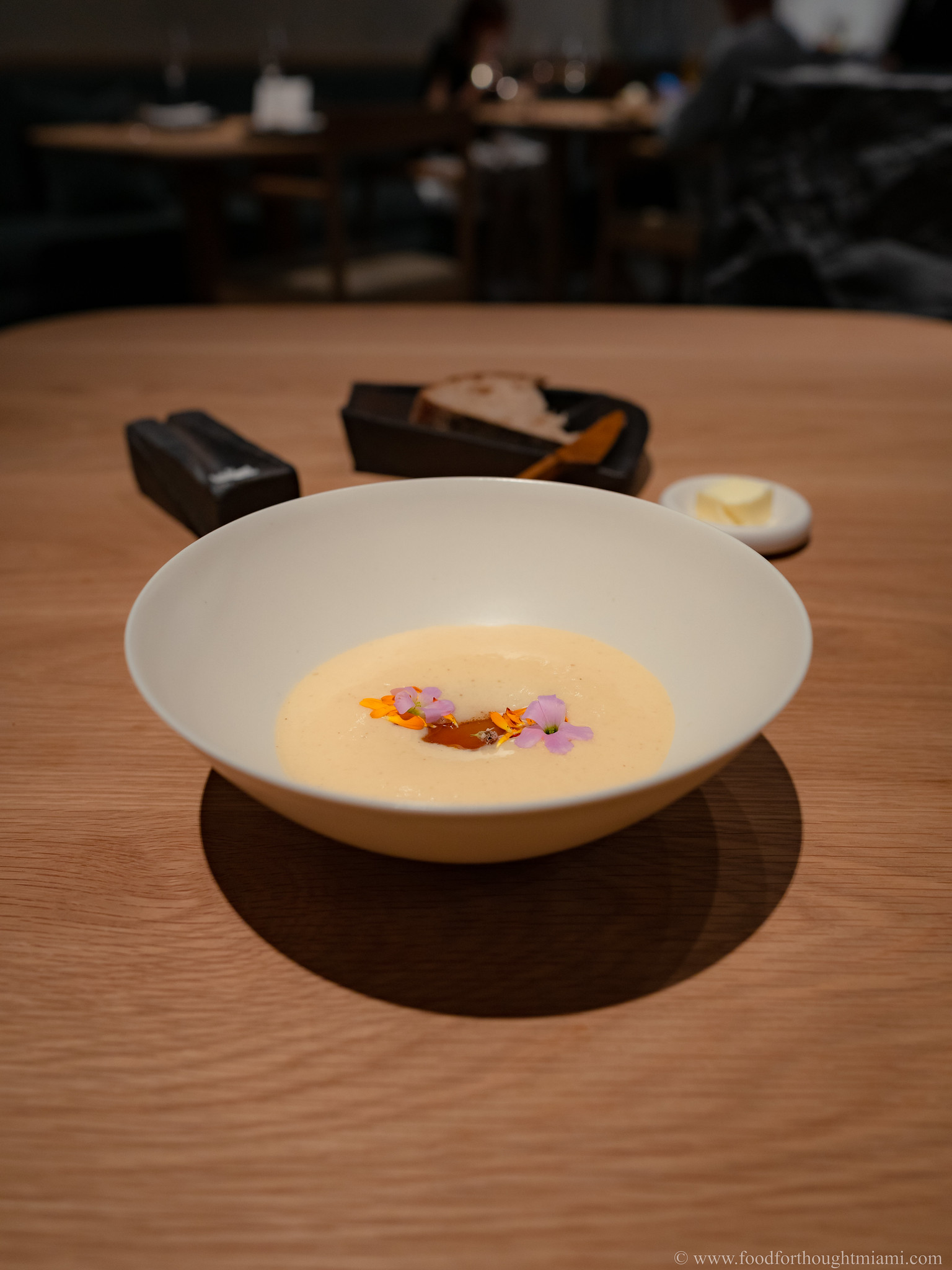 |
| Golden Beet, Crustacean - Okta (Oregon) |
 |
| Lemon Cream - Okta (Oregon) |
More reminiscences: back in 2014, I had a
really wonderful meal at
Atera in Tribeca while Matthew Lightner was the chef. Lightner had made a name for himself at
Castagna in Portland before switching coasts to New York. He eventually found his way back, and earlier this year opened
Okta, right in the heart of Oregon wine country at the
Tributary Hotel in McMinnville. Along the model of places like
Harbor House, Okta aspires to be rooted in its surroundings and the seasons: an
iced display counter at the entrance prominently highlights some of the local products that will become part of the meal. My visit was within about a month of its highly touted opening, and a few dishes still felt a bit clumsy or not fully formed, but I expect that will smooth out with time.
When I wrote about our meal at Atera, I quoted an interview with Lightner where he talked about the process of creating a new dish, and he said "It’s funny, because it’s almost like destiny, as if sometimes a dish was meant to kind of happen, as if it were somewhere hidden in the back of my head or hidden in the back of my notebooks of old experiences that I can bring into the new and into my style." And there were several notes from old notebooks that appeared at Okta: the
rockfish crudo with powdered wild rose in a tangy ponzu echoed a
black bass crudo with a broth of rose hips and petals we had at Atera; a
cracker of carrot and trout roe recalled an
amaranth cracker with trout roe that was part of a trout trilogy in that meal. And Lightner has a recurring style, which I really enjoy, where dishes often come in multiple pieces: a
corn chawanmushi with a
black truffle and cheese cracker running sidecar, a dish of
honey barbecued eggplant and caviar with a
burnished laminated brioche roll alongside, ideal for scooping.
[8]
But the savory dish of the night for me was a composition of honey roasted golden beets, with a hint of sweet caramelized char, awash in a pool of frothy, creamy, crustacean sabayon, with some oxalis and marigold petals floating on top. It was intensely flavored of earth and sea but still balanced, with lovely, luxurious textures, and just beautiful all around.
And all of the desserts were excellent, especially this simple but stunning meditation on lemon, with a mouthfeel like a semifreddo, cloudlike meringue, lemon sugar and lemon thyme; such bright, zippy flavor and again just wonderful textures. But also a lovely dish of
blueberry ice cream with carrot seed "fluff" and wispy carrot fronds, and a
reinvented tiramisu which tops rich, creamy mascarpone with a crown of soft sponge cake blanketed in a pleasantly bitter powder of dehydrated chrysanthemum leaves.
If you stay at the hotel, the following morning will bring an
over-the-top in-room breakfast spread from the restaurant: cured bacon, sausage, cheeses, quiche, soft-boiled eggs, crunchy radishes, a lovely salad, hazelnut granola, gorgeous pastries, wood-fired brioche, jam and lemon curd and good butter. (Confession: I packed a whole bunch of this for the road.)
In Portland, I got to meet up with Frod Jr. for a couple days as we did our best to eat our way through one of my favorite eating towns. I was completely charmed by Thomas and Maria Pisha-Duffly's
Gado Gado, which serves a really great version of the Dutch-Indonesian "rijsttafel," or "rice table." As they do it, it's basically a family-style tasting menu, with about a
dozen dishes which initially appear one-by-one but eventually start
piling up into a delightful traffic jam of Southeast Asian flavors. I really liked the
pani puri with pea purée and pickled vegetables, and the delightfully flaky, buttery
roti canai with blistered heirloom tomato curry, but the surprise hit was, of all things, the chicken satay. This ubiquitous dish finds new life here with the funk of terasi (fermented shrimp paste) resonating through the peanut sauce, sweet soy gula jawa (palm sugar) forming a blackened caramel on the grilled chicken skewers, toasted peanuts and slivered lime leaf providing some textural and citrusy contrast. But it almost doesn't make sense to pick out a particular dish here: it's about the whole experience, which keeps all of the fun and flavor, but none of the formality and fuss, of a tasting menu.
[9]
Another Portland meal, another wonderfully reinvented and casualized take on the tasting menu. At Bonnie Morales'
Kachka, you can – and definitely should – build your meal around what they call the "Ruskie Zakuski Experience," in which, for $35 per person, they will
cover your table, Tetris-style, with a parade of zakuski, or cold appetizers:
deviled eggs topped with preserved sprats, house-made pickles, the delightfully named and delicious
Herring Under a Fur Coat,
[10] chicken liver and cured pork
toasts, a
seasonal salad (here with gorgeous heirloom tomatoes, Jimmy Nardello peppers, adjika spiced sunflower seeds, and Ukranian tahini),
cod liver mousse,
more toasts with Baltic sprats,
Crimean clams, and
salmon roe (or caviar if you're an oligarch) with blini and all the fixings. Add some shots of their many flavored vodkas,
[11] some
pelmeni, maybe a main course to share, and you've got yourself an excellent meal.
It was all pretty great, but my favorite thing was one of the items we added on: the golubtsi: sweet and sour cabbage rolls stuffed with beef, lamb and pork. They tasted like home cooking in the very best possible way.
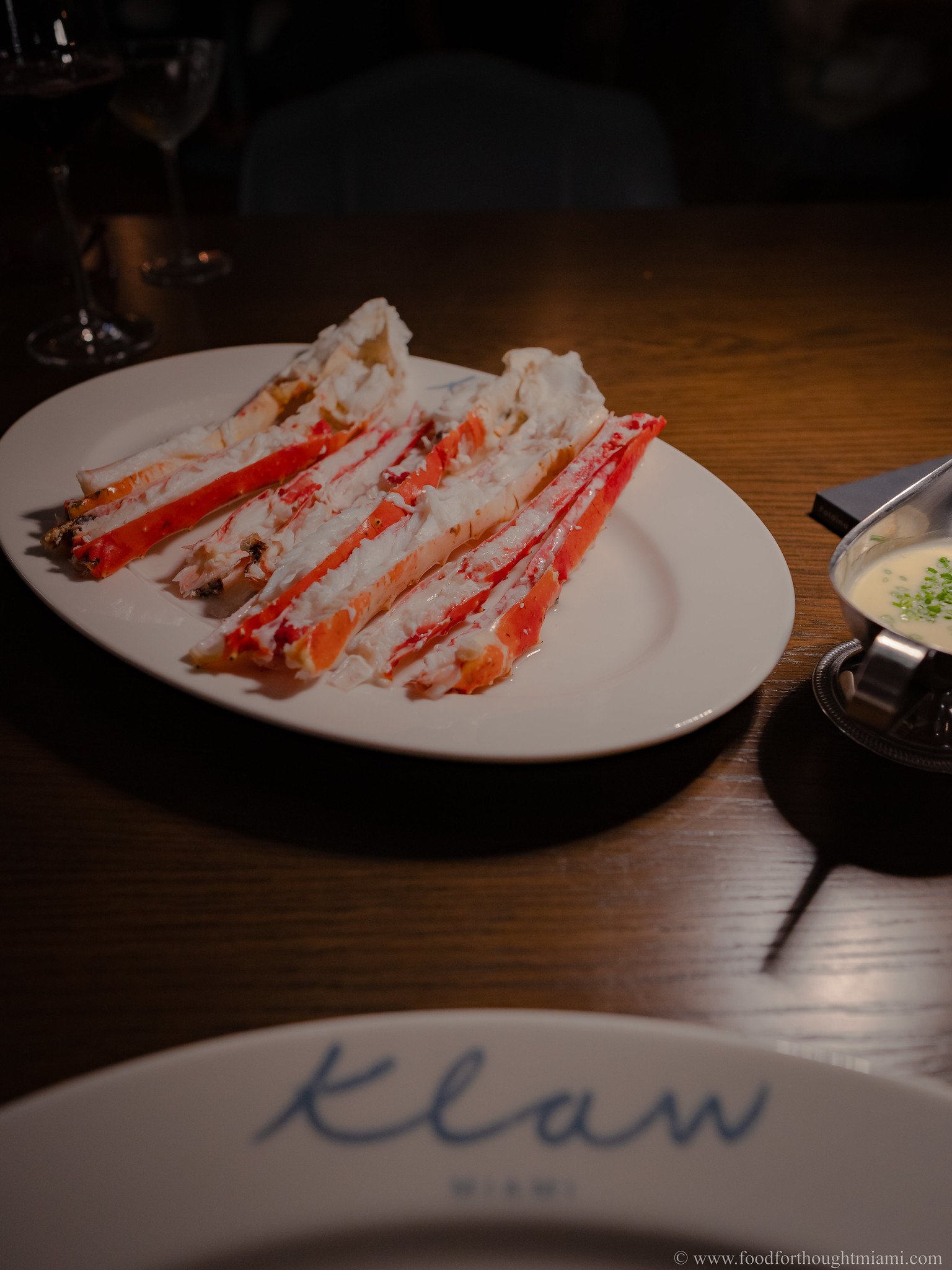 |
| King Crab - Klaw (Edgewater Miami) |
Back home, we finally got around to trying one of the new restaurants all the hip kids are talking about:
Klaw. I initially dismissed Klaw as just another stuffy steakhouse with a bit of seafood, but it is a more curious place than I gave it credit for. First, its location in Edgewater
[12] offers a couple things that are unusual for Miami: a
view of Biscayne Bay, and a bit of history (the building, which was the home of the
Miami Woman's Club, was constructed in 1925, and has been thoughtfully restored). Second, the menu has a very specific focus: aside from appetizers and sides, you can have king crab, or you can have steak. Period. This is what they serve, and if you don't like it, well, you can go somewhere else.
But those crabs! They bring in whole king crabs from Norway, keep them in tanks, and make a
production out of splitting the steamed legs tableside. They do not come cheap: you can order just the legs and claws for $11 an ounce, with a minimum one pound order, or get yourself a whole crab at $120 a pound. The good news is that they are really, really good: tasting of the ocean, the flesh simultaneously saline and sweet, and pillow-tender. You can also get the crab in a more budget-friendly format in an appetizer garnishing some
tacos along with kimchi, avocado and dashi butter.
[13]
 |
| Empanada de Pino - Boie De (Buena Vista) |
One of our favorite vacations was a trip to Chile about six years ago. And one of our favorite things to eat while there were the empanadas. Now, I'm not going to start a fight and tell you that Chilean empanadas are the best of all empanadas: Argentinians, Colombians and Venezuelans, among others, would have things to say about that. But Chileans are definitely in the ring. So when I saw that
Boia De was doing a Chilean Independence Day dinner (Luci Giangrandi's family is from Chile), we secured ourselves seats at the counter.
Alongside their regular menu, they added several dishes that vividly recalled the flavors we had on our trip: a
kanpachi crudo "a la chilena" dressed with juicy tomatoes, onion, cilantro and pickled coriander;
clams a la parmesana, a variation on a dish we found throughout Chile, often prepared with machas, the local razor clams. But maybe most evocative was this empanada de pino, stuffed with a picadillo-like mixture of chopped beef, onions, olives and hard boiled egg, and served with pebre, a tangy salsa which was ubiquitous and delicious on everything. It felt like we were back in Chile.
 |
| Lumpfish Roe - Silfra (Iceland) |
 |
| Grilled Lamb Filet - Silfra (Iceland) |
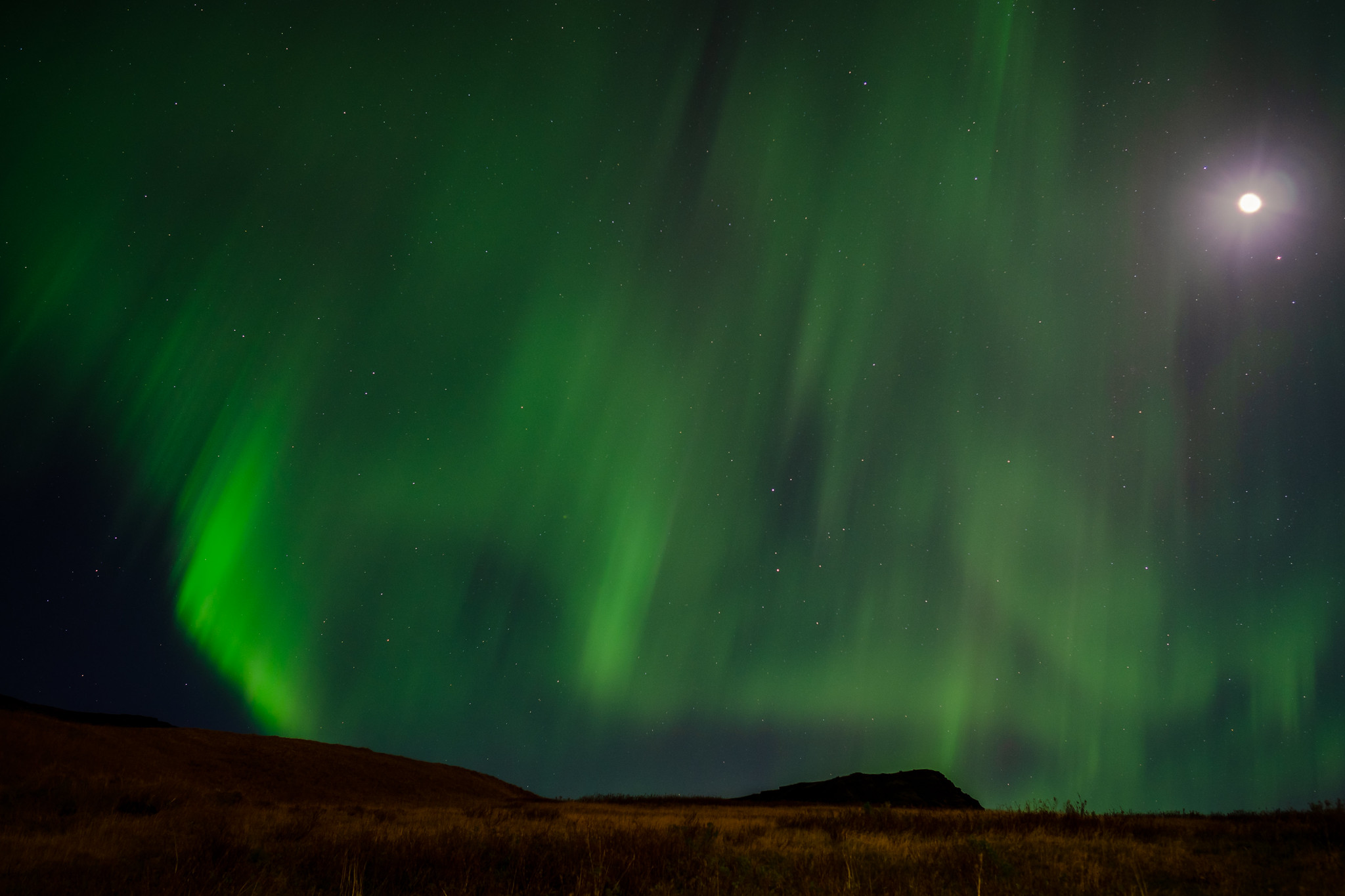 |
| Northern Lights - Vik i Myrdal (Iceland) |
Now begins the Icelandic portion of our programming. In October, we traveled to Iceland; ever since, I feel as if I've been acting as an unofficial volunteer representative of the Icelandic Tourism Board. It was one of my favorite trips ever, with some of the most incredible sights and activities I've been lucky enough to experience.
[14] Unlike my usual modus operandi, this was not a trip particularly focused on dining; and yet we ate very, very well over the course of our journey.
Iceland actually has two Michelin-starred restaurants, both in Reykjavik, but neither were on our agenda. Our itinerary took us mostly out of the "big city"
[15] except for our final night, and most of our dinners were at hotel restaurants in relatively remote spots. Now, I'm not going to lie: I did pick our lodgings in part based on a perusal of their online menus, so I'm not claiming that every hotel restaurant in Iceland serves food like this. But I will tell you that it was relatively easy to find spots that made a bona fide effort to use local ingredients and highlight local flavors; and I will also tell you that some of those local ingredients are among the finest examples I've tasted anywhere.
Fresh, high quality local arctic char, trout, and cod could be found just about everywhere we went, including a particularly tasty nugget of smoked trout with brown butter, skyr, fermented lemon and cucumber served as an opening bite at
Matur og Drykkur, our one dinner in Reykjavik.
[16] A nationwide windstorm shut down travel for a day, leaving us with only one night at the
ION Adventure Hotel. I wish we'd had more time there, in part because its restaurant,
Silfra, served a couple of my favorite things from the entire trip: a dish of briny beads of lumpfish roe over silky sour cream and dill purée, served with toasty waffles; and a gorgeous grilled lamb filet plated with a lamb shank croquette, potato purée, frothy hollandaise and savory red wine jus. At risk of offending my Australian friends,
[17] I will say this: Icelandic lamb is the best lamb I have ever tasted. The langoustines we had at
Skalakot, an inn, restaurant and horse farm near Hvolsvöllur on the South Coast, were also the finest, freshest example of the crustacean I've ever had. And at the
Hótel Búðir in Snæfellsbær, the dessert of skyr mousse and rhubarb confit topped with an oat crumble was so good we ordered it twice.
I close my 2022 list with one of the year's most recent additions:
Walrus Rodeo,
[18] the long-awaited second album from Luciana Giangrandi and Alex Meyer after their
Boia De debut. My first visit was only in their second week, and I usually like giving new spots some time to breathe. But unsurprisingly, Walrus Rodeo shows lots of promise, with Alex & Luci adding Jeff Maxfield (formerly of Brad Kilgore's Alter and Brava, and the
Toscana Divino group) to the team for this one. The
space, just catty-corner to Boia De in the same strip mall, is somewhat stark compared to the intimacy of its 24-seat sibling, with more of an 80's vibe going on. The menu – adorned with illustrations by
Beth Rhodes – is similar to Boia De in that it is Italian in spirit, while not being remotely canon in any sense. A
salad of bitter greens is dressed with green goddess and garnished with hazelnuts and apples. A
lasagna is layered with lamb ragu and mustard greens. There are a couple pizzas on the menu, courtesy of the wood-burning oven left behind by the prior tenant - one topped with corn, poblano chiles, onions, and lime, and the "
Rodeo 'Za" with anchovies, tomatoes, and
maple brown butter, lest you thought you knew where this was headed.
Maybe the best example – and my favorite dish of our first visit – was this Cabbage Carbonara: the under-appreciated vegetable well-charred to bring out savory, sweet and bitter depth, sauced with a fermented hollandaise playing the role of the egg, and then topped with chewy-crisp nubs of pancetta and a dusting of shaved pecorino cheese. All the components of a carbonara, in a completely new dish. Saddle up!
Well, that's a wrap for 2022. These are interesting times in the Miami dining world. Despite everything – a lingering pandemic, inflation, a tight labor market, skyrocketing rents – we've seen an influx of new restaurants that surpasses any in (my) recent memory. Of course, "more" does not necessarily mean "better," and there are some trends which are – not great? We're seeing a return of the "clubstaurant," which I could happily live without.
[19] We're seeing lots of big restaurants with boring menus that are virtually indistinguishable from your average country club. We're seeing lots of big-name operators from New York and elsewhere, typically cloning concepts that have already worked elsewhere.
[20] We're seeing an awful lot of Middle-Eastern / Mediterranean restaurants, and an awful lot of omakase counters (a trend I've already discussed
supra), and while I'm not philosophically opposed to either of these, I'm not necessarily sure we need so many.
But we're also seeing a new generation of chefs get the chance to expand their reach: Niven Patel with
Mamey and
Orno, Michael Beltran with the reopened
Chug's Diner,
The Gibson Room, and
Laurel to go along with
Ariete and
Navé; Luci & Alex looking to duplicate their success with Boia De through Walrus Rodeo, Juan Garrido working with one of my favorite folks in the business, Kurtis Jantz, and the
Lost Boy group, opening the Spanish gin and tapas themed
Tropezon and more recently the New Orleans inspired
Joliet (where I just had a great first meal) in Miami Beach,
Stubborn Seed's Jeremy Ford opening
Beauty & the Butcher. We've got Brad Kilgore getting back in the game – and with Elad Zvi and Gabe Orta of
Bar Lab, no less – with
MaryGold's Brasserie, and Timon Balloo taking his show up to Fort Lauderdale with
The Katherine. And we're also seeing some new creativity and quirkiness flourish: the above-mentioned
Lion & the Rambler, Pablo Zitzmann rethinking dim sum at
Zitz Sum, delicious Vietnamese drinking foods from
Tam Tam (currently popping up at
Low Key Miami while completing a never-ending buildout downtown),
[21] Josh Elliott (formerly at Pubbelly's sadly short-lived L'echon, then up in Boston at Ken Oringer's
Toro) back in Miami doing a wonderful Spanish / Japanese pop-up,
QP Tapas. My to-do list for 2023 is getting really long.
I wish everyone a happy and healthy 2023, and will repeat, as I always do, my late grandfather's perennial wish: "Always better, never worse."
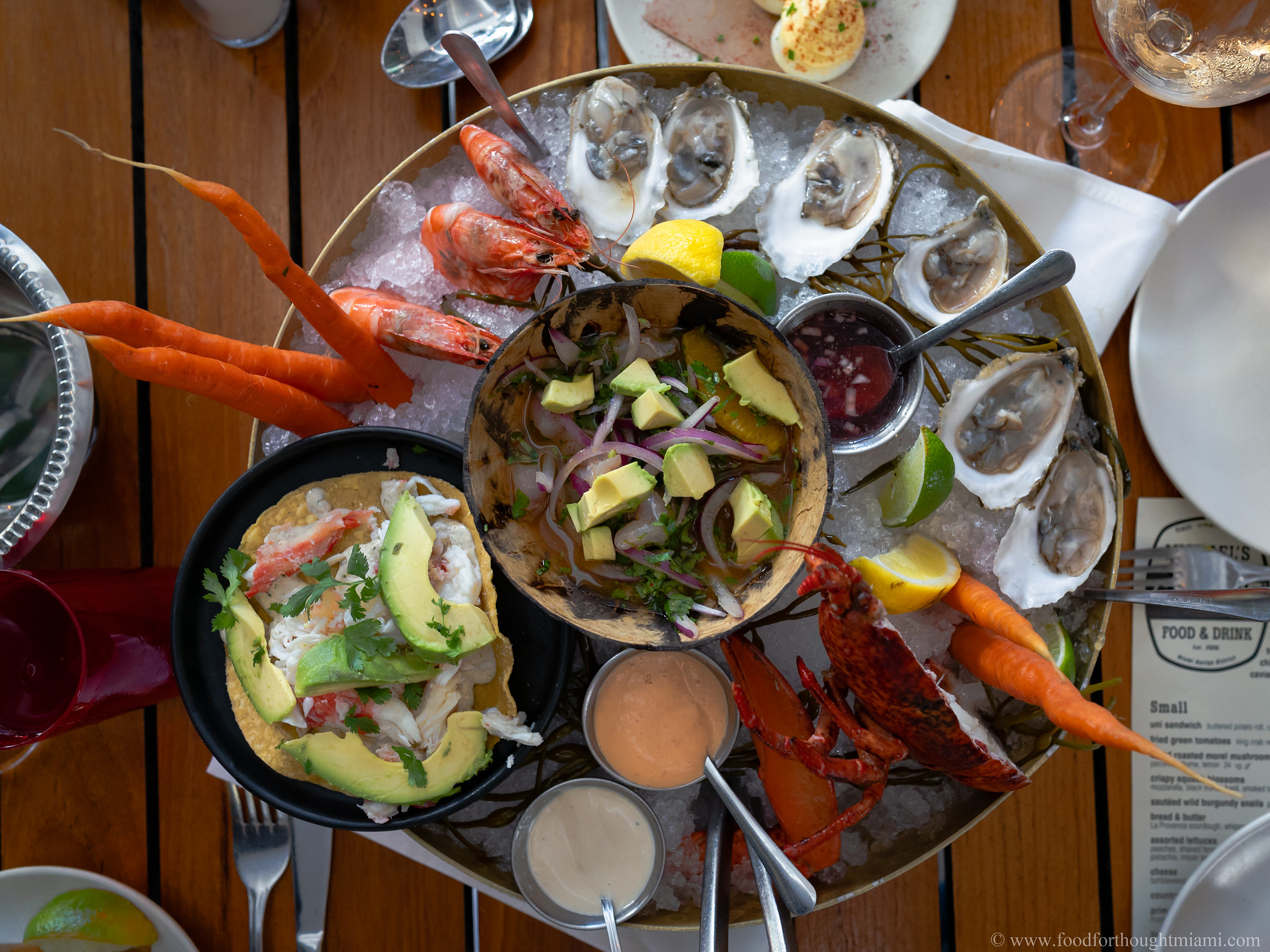
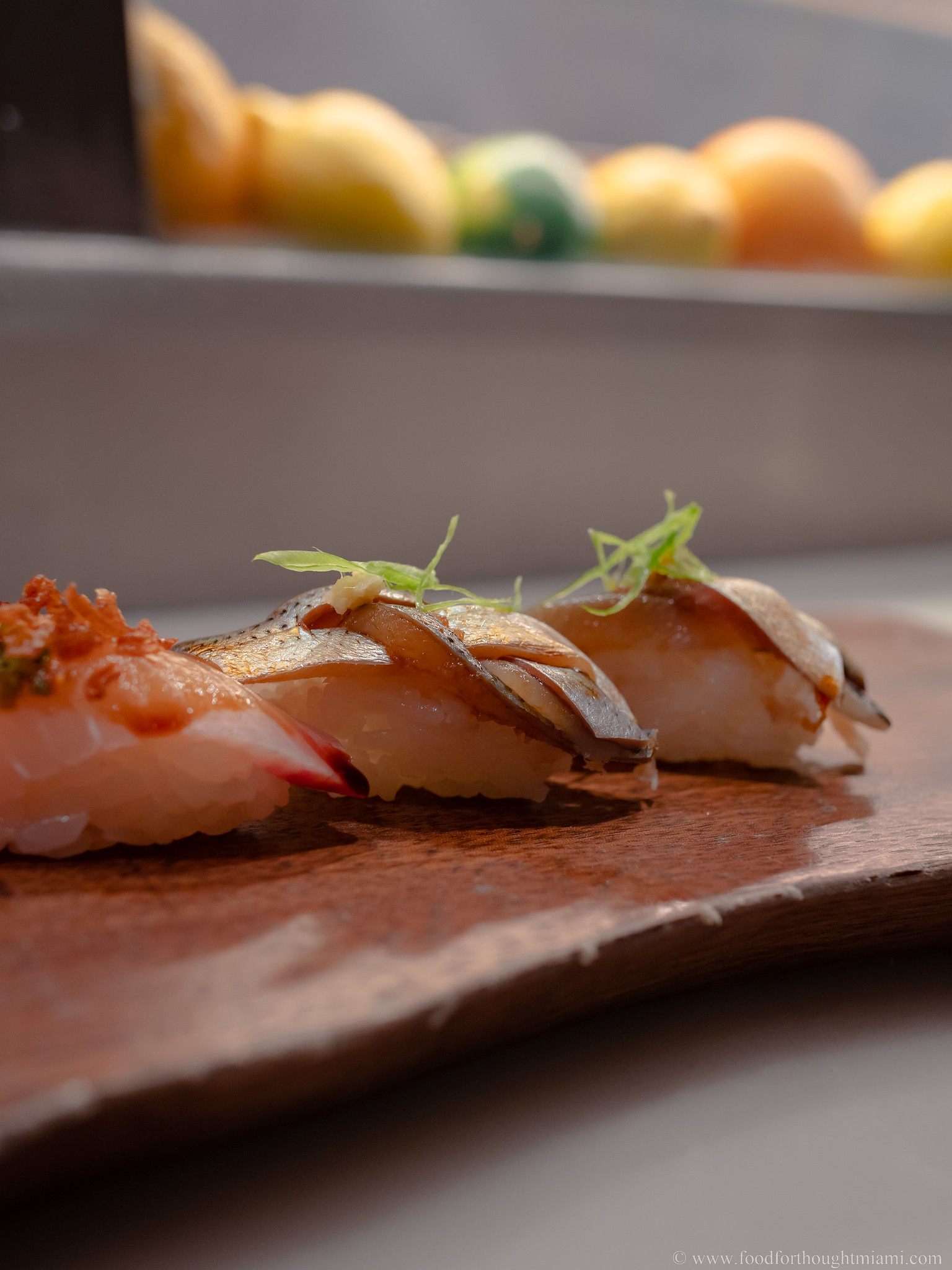


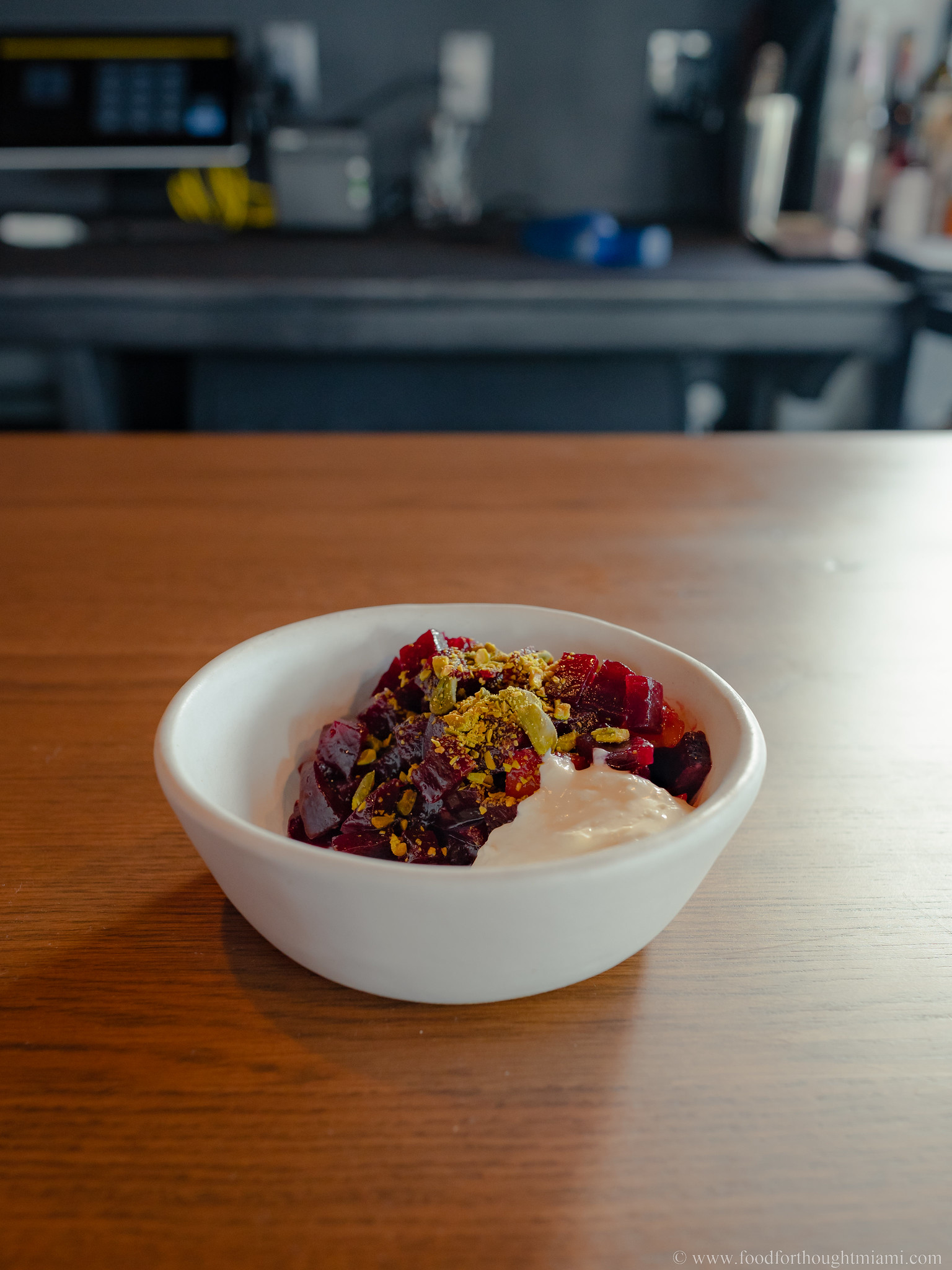
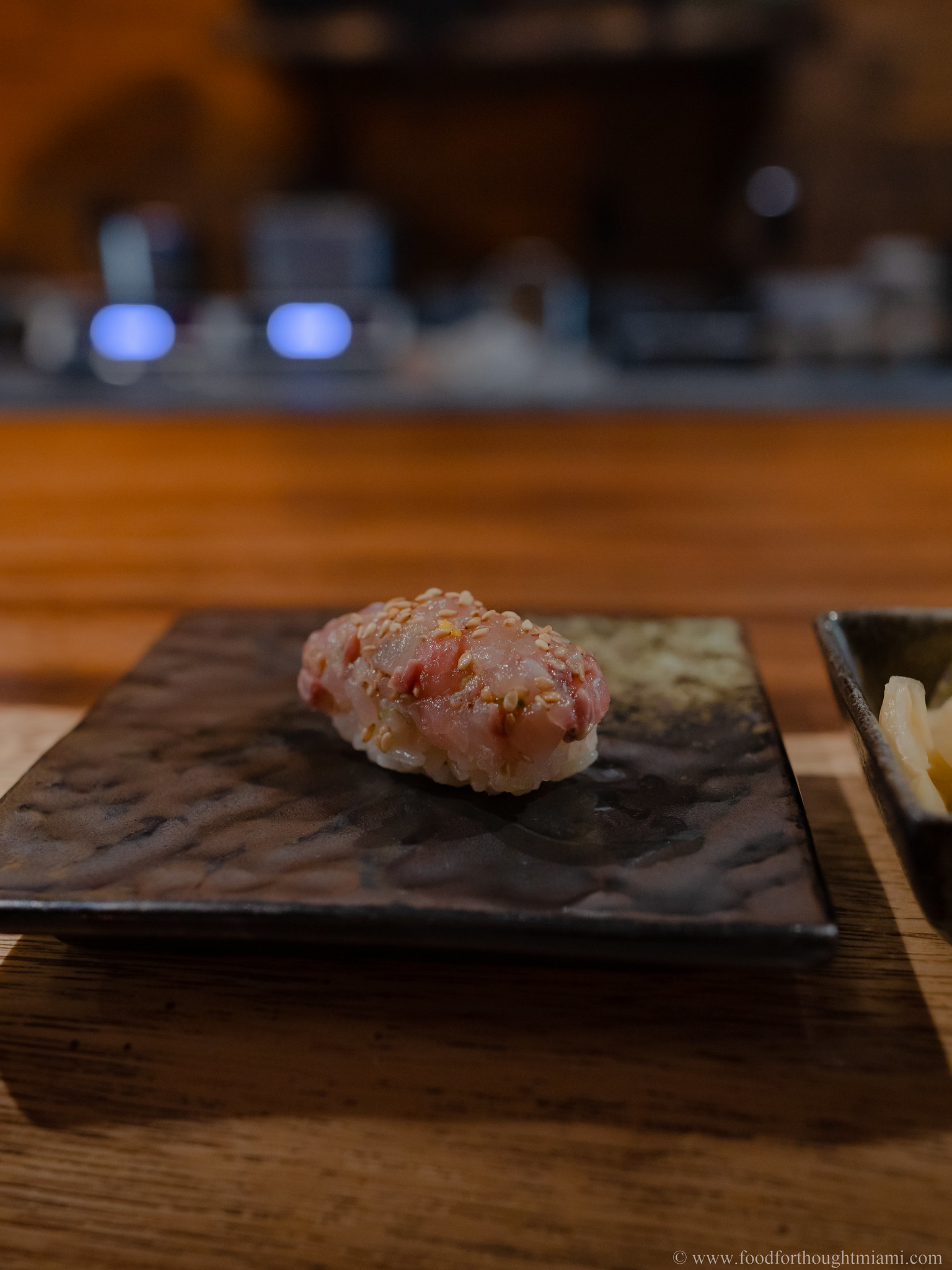




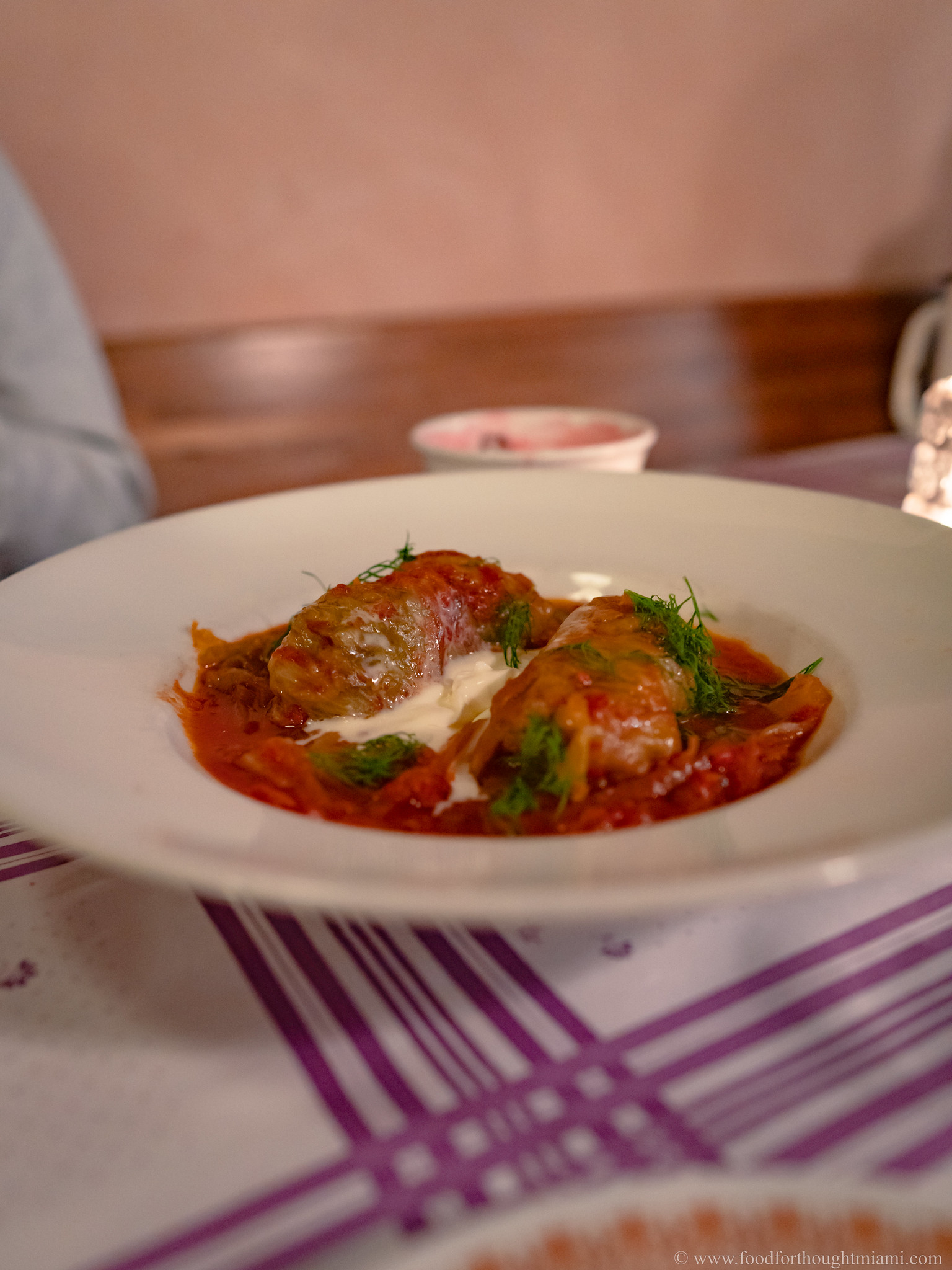


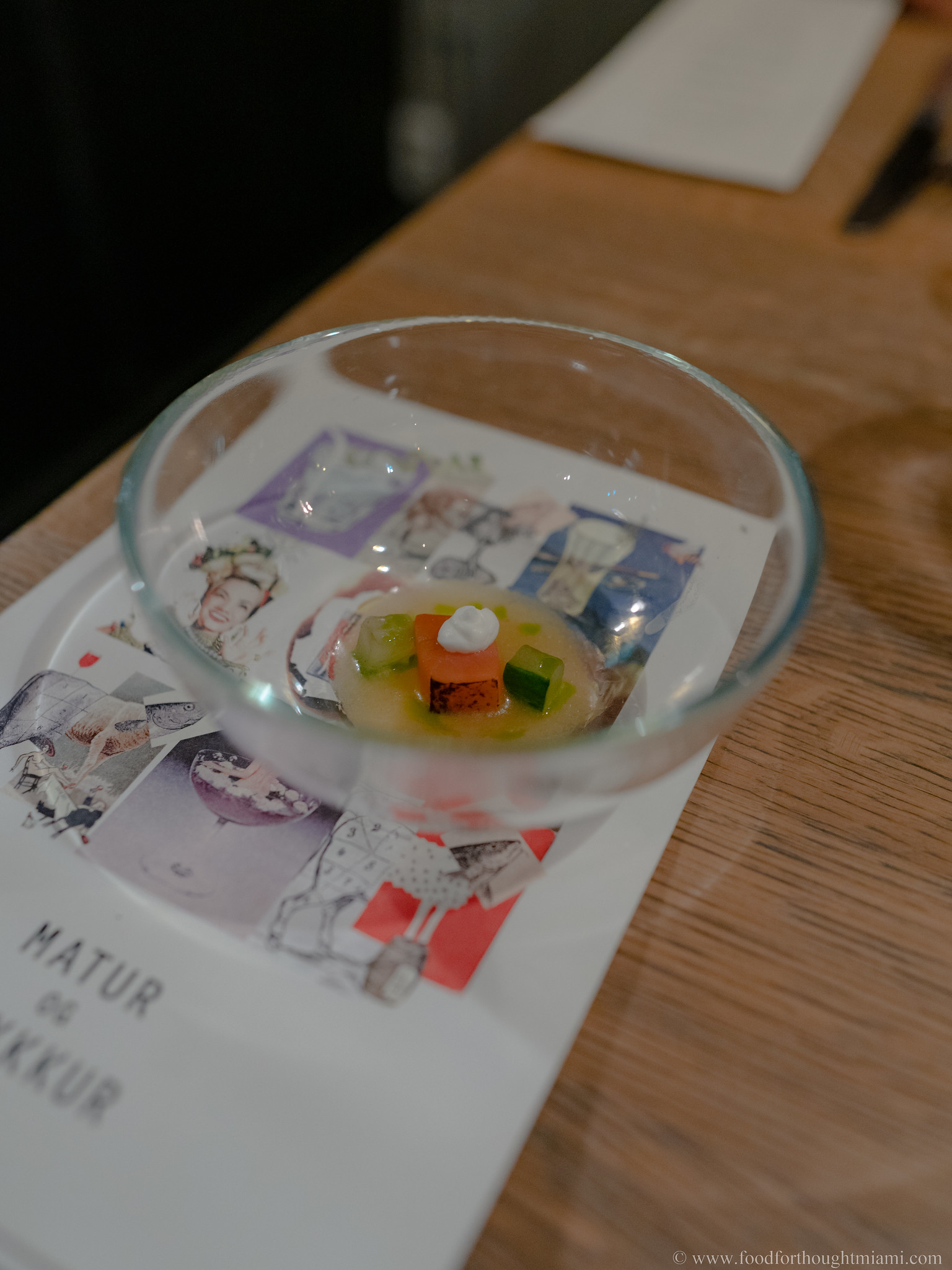


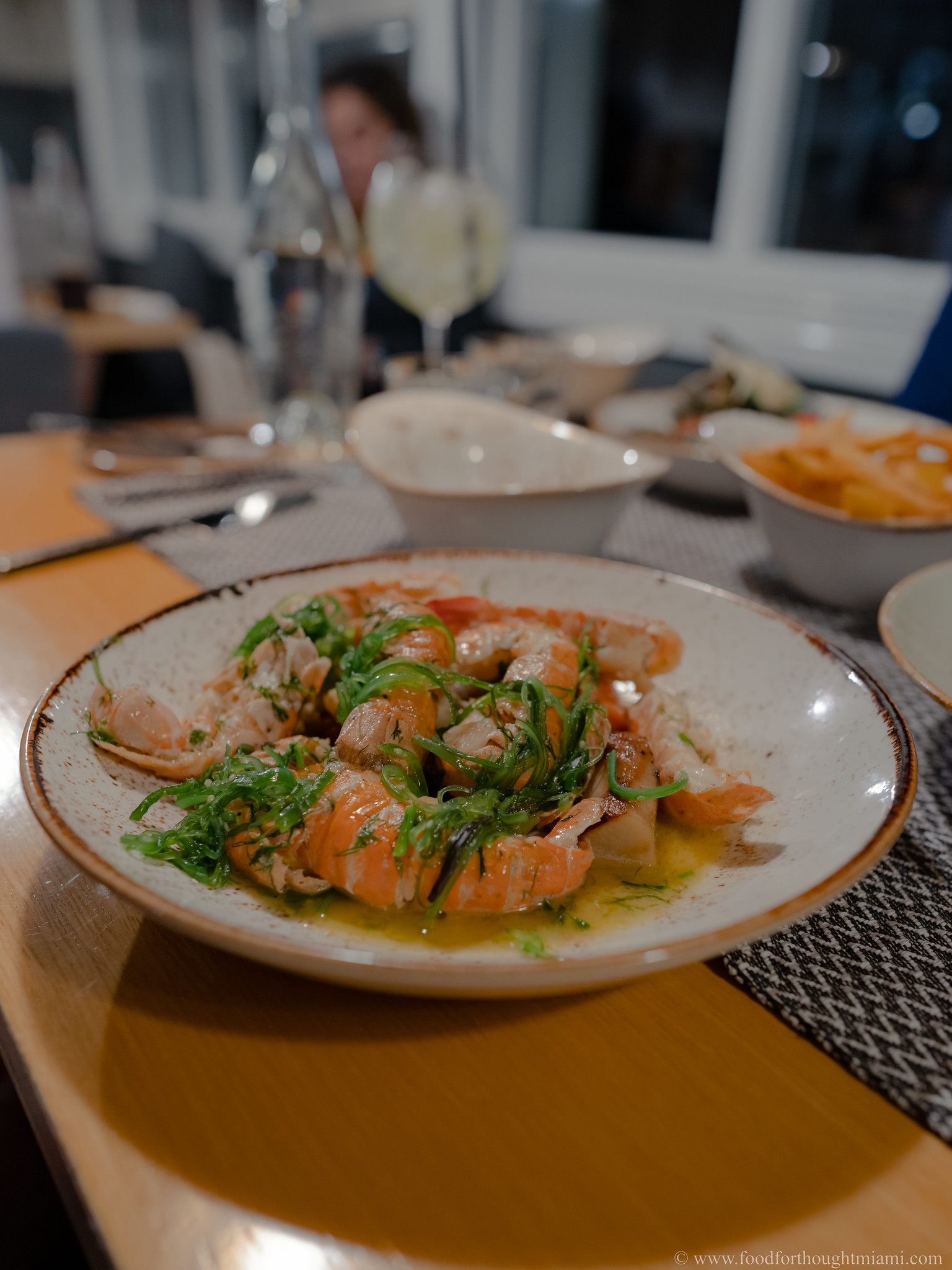




No comments:
Post a Comment